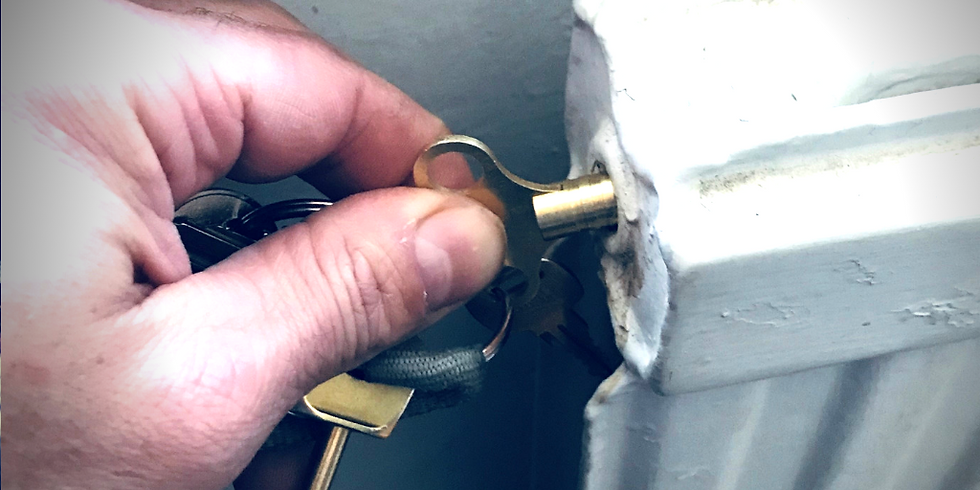Are your radiators giving off a bad smell of eggs or similar when you bleed them of air? (the removal of air via the air vent) Then this could probably be a build-up of a chemical called Hydrogen Sulphide in the water.
Hydrogen Sulphide which can build up in central heating systems not only causes a bad smell but will cause corrosion sludge and magnetite within your central heating system over time and will require removing.
A few well known brands of central heating cleaner and corrosion inhibitors available are Sentinal, Fernox or Adey, any one of these would be perfect for the job, but you'll need to drain and flush out the old contaminated water from the central heating system first.
Cleaning the Central Heating System
Before you introduce a new product to the central heating system, we recommend you fully drain the heating system of water. This will remove the loose deposits and sludge suspended in the water.

Draining Down the Water in the Central Heating System
First things first, turn off the power to the boiler and controls. Allow the system to cool. If you have a vented system close the supply to the feed and expansion tank in the loft.
When you are ready to drain the system, you must find the drain cock on the pipework. This is normally found on a radiator by a doorway on the lowest part of the system. Run a hose to an outside drain and attach a clip to secure the end of the hose to the drain cock. Open the air vents at the top of the system to allow the water to drain away. Remember to close all vents once your system is empty.
Adding the Chemical System Cleaner
Consult the manufacturer's instructions to determine the correct amount of chemical to use in your system. The method used to add the cleaner will let you know what type of system you are working with. If you have an open vented central heating system, adding the chemical when filling up via the feed and expansion tank is easy. Sealed central heating systems require a pressurised cartridge of the chemical that must be connected to the air vent on a radiator using a special attachment hose. After this, inject the solution into the heating system.
Refilling the Central Heating System
Close the drain valve and fill the system. Remove the hose from the drain cock. With a vented system open the water supply to the tank in the loft which will allow the water to flow back into the system.
With a sealed system you need to locate the filling loop and open the valves to allow water into the system paying attention to the pressure gauge. The recommended pressure for heating systems is normally 1.3 to 1.5 bar.
You will now need to vent each radiator by opening the bleed valve to release the trapped air. Always start with the lowest level radiator and work your way to the top of the house. This reduces the chance of trapping air in the lower part of the central heating system.
Turning the Central Heating System Back On
Turn on the boiler and control systems and raise your thermostat to its normal setting. Allow the cleaner to run through for at least an hour. This will enable it to break down any deposits in the radiators and pipes. For dirtier systems, you may need to leave the cleaner running longer - up to 4 weeks in some cases - so that it can take care of stubborn sludge and sediment.
Drain and Flush the Central Heating System
Once the cleaner has had enough time to work it is suggested to flush out the chemicals until the water runs clear. Once this is done then refill, add inhibitor to protect the system for the future and reduce the build-up of sludge and scale. This will also prolong the life of the pump valves and other moving components in the system as well as reducing the likelihood of boiler break down. For more information on ideal dosing methods read our post on BS 7593:2019: The Code of Practice for Domestic Heating and Cooling Systems
Something You Must Know
Systems that have larger quantities of sludge and scale may require a power flush with the use of magnetic filters. This is a more effective solution to the fill and flush method written above and would be highly advised if you have a high efficiency boiler. All new high efficiency boilers have smaller water ways in their heat exchangers and can easily become blocked (by debris moving through the central heating system) if the right precautions are not taken. This is where it becomes more complicated and expert heating engineers are suggested to carry this type of work out to your central heating system.
Our engineers have been trained on all types of heating systems and have the right equipment to remove the maximum amount of sludge and scale from the system allowing the circuit to become free of debris and increasing the flow, heat and efficiency of the boiler. We implement various methods of cleaning and ongoing protection such a microbubble deaerators for all types of systems including VDI 2035 Water Treatment in Heating Systems.
